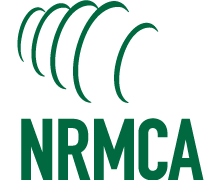
| Archive | nrmca.org | E-Store | Conferences & Events | Certifications | InFocus | Membership Directory |
2013 International Concrete Sustainability Conference Speaker Spotlight NASA’s Zortnetzer to Present on LEED Platinum Sustainability Base
 Dr. Steve Zornetzer, PhD, associate center director at NASA Ames Research Center will present details of the new ultra-green federal facility, named Sustainability Base, located at NASA Ames Research Center, Moffett Field, CA at the 2013 International Concrete Sustainability Conference, May 6-8, in San Francisco. Sustainability Base received the highest level of Leadership in Energy and Environmental Design (LEED) certification, LEED Platinum, in 2012. Unlike any other government building ever constructed, this new facility’s performance includes repurposed NASA aerospace technologies. Highly intelligent, even intuitive, this building is designed to optimize its performance automatically, in real time, and in response to internal and external changes. This 50,000 square-foot, lunar-shaped building will know exactly how much energy each occupant uses and can adapt to weather, season and occupancy. Sustainability Base was awarded LEED platinum certification because it received more than 80 out of 100 points across five major categories: sustainable sites, water efficiency, energy and atmosphere, materials and resources, indoor environmental quality, plus additional points for innovation in design and regional priority. NASA’s new, environmentally-friendly building was named in honor of the first humans to walk on the surface of the moon more than 40 years ago. The landing site for the Apollo 11 spacecraft was named Tranquility Base. Sustainability Base is a site where NASA technologies can be repurposed for application on Earth. Dr. Steve Zornetzer, PhD, associate center director at NASA Ames Research Center will present details of the new ultra-green federal facility, named Sustainability Base, located at NASA Ames Research Center, Moffett Field, CA at the 2013 International Concrete Sustainability Conference, May 6-8, in San Francisco. Sustainability Base received the highest level of Leadership in Energy and Environmental Design (LEED) certification, LEED Platinum, in 2012. Unlike any other government building ever constructed, this new facility’s performance includes repurposed NASA aerospace technologies. Highly intelligent, even intuitive, this building is designed to optimize its performance automatically, in real time, and in response to internal and external changes. This 50,000 square-foot, lunar-shaped building will know exactly how much energy each occupant uses and can adapt to weather, season and occupancy. Sustainability Base was awarded LEED platinum certification because it received more than 80 out of 100 points across five major categories: sustainable sites, water efficiency, energy and atmosphere, materials and resources, indoor environmental quality, plus additional points for innovation in design and regional priority. NASA’s new, environmentally-friendly building was named in honor of the first humans to walk on the surface of the moon more than 40 years ago. The landing site for the Apollo 11 spacecraft was named Tranquility Base. Sustainability Base is a site where NASA technologies can be repurposed for application on Earth.MIT’s Jeremy Gregory to Present on Life Cycle Assessment of Buildings

Dr Jeremy Gregory, PhD, research scientist, MIT Materials Systems Laboratory, will present Life Cycle Assessment of Buildings: A Gap Analysis of Existing Literature and Trending Tools at the 2013 International Concrete Sustainability Conference, May 6-8, in San Francisco. It is widely reported that buildings contribute one-third of global greenhouse gas (GHG) emissions and more than 40% of global energy use. The United Nations Intergovernmental Panel on Climate Change identified the building sector as the area with the most potential to deliver long-term and cost-effective GHG reduction. One method for quantifying real and potential reductions in GHG emissions is life cycle assessment (LCA). However, inconsistent LCA design tools, coupled with regional variations in housing styles and energy sources, makes comparison between studies challenging and impedes scalability. Existing tools generally fall into two categories: those that use LCA to estimate life cycle impacts of materials and those that focus on estimating the use phase energy modeling. While these tools certainly add value for users, the industry lacks a tool that is both comprehensive and provides a platform for quantifying for uncertainty. This presentation will review different approaches to building LCA in an effort to identify overarching trends, as well as identify gaps or inconsistencies ripe for refinement. Click here for list of speakers and to register for the conference. Contact Lionel Lemay at LLemay@nrmca.org or 847-918-7101.
|
|
|




